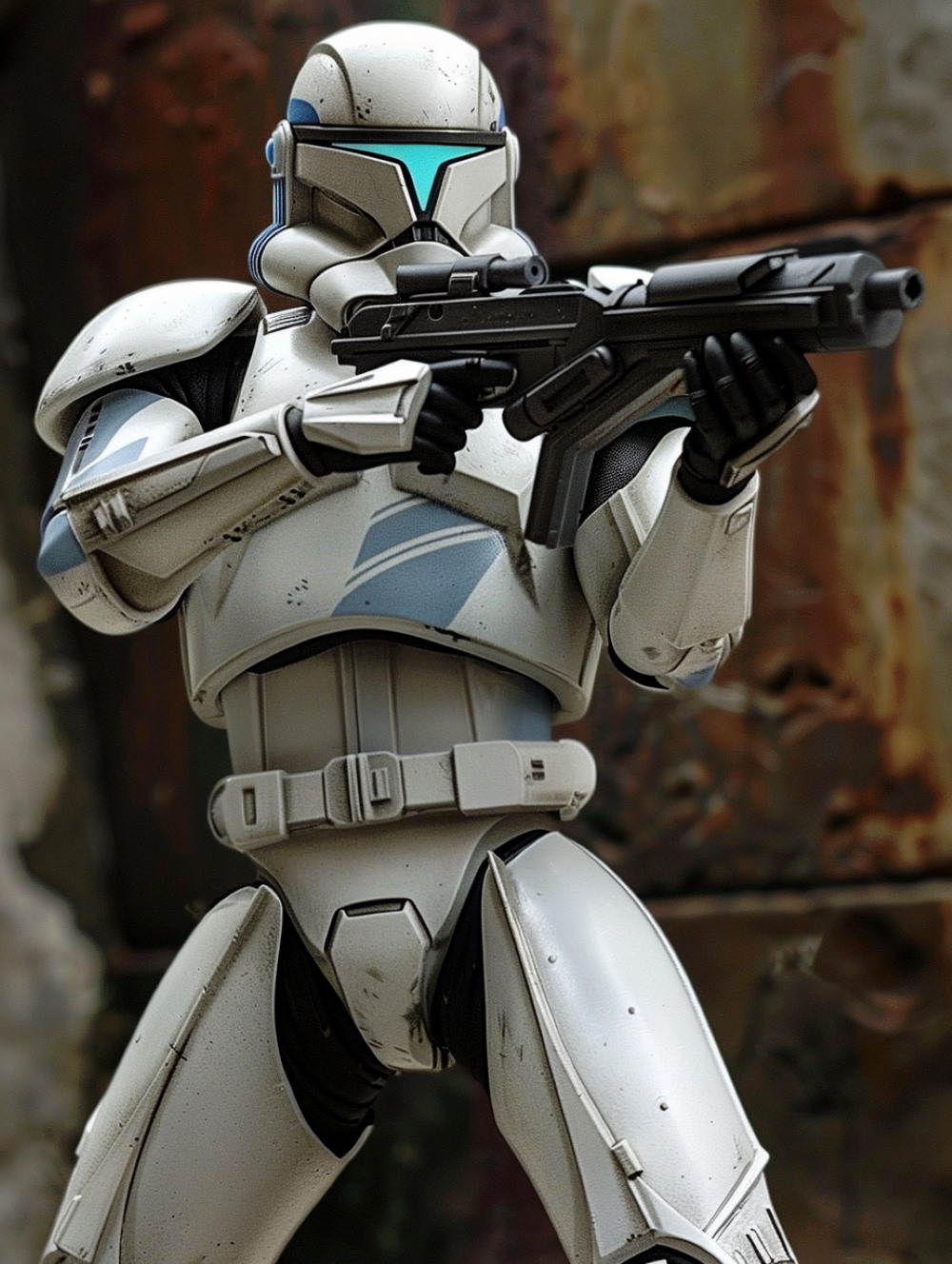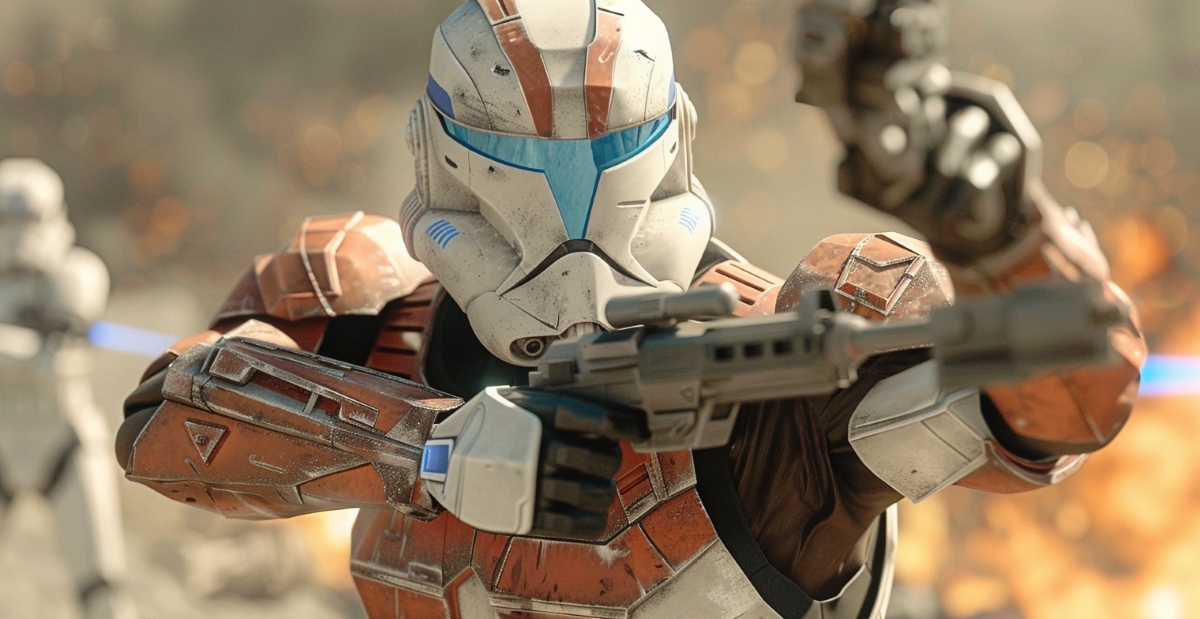While common clone trooper armors were considered pretty sick, Clone Commando armor was on another level entirely.
Clone commandos who wore Katarn-class armor often spoke highly of its capabilities.
For instance, Darman, a member of Omega Squad, once reflected on his armor, saying, “I used to think I wore this armor. Now I think it’s wearing me.”
This quote highlights the close relationship between the commandos and their armor, emphasizing how it became an essential part of their identity and effectiveness in combat.
In this article, we’ll explore what made Clone Commando armor the strongest and most reliable protection for clone troopers during the Clone Wars.
The Origins of Katarn-Class Armor

The History Behind the Katarn-Class Armor Name
Katarn-class armor, used by clone commandos, was named after a fierce creature from the planet Kashyyyk.
These creatures, called katarns, were known for their strength, agility, and deadly hunting skills.
The Wookiees, who lived on Kashyyyk, respected the katarns and even used them in their cultural ceremonies.
The name “Katarn” for the armor reflected the qualities of these creatures – toughness, resilience, and the ability to handle any situation.
The Special Materials That Made Up the Armor
The material used in Katarn-class armor made it incredibly strong.
The armor was made from reinforced duroplast plating, which provided excellent protection against blaster fire and other weapons.
Unlike standard clone armor, Katarn-class armor could withstand extreme temperatures, both hot and cold.
This made it ideal for missions in harsh environments.
The armor weighed about 45 pounds (20 kilograms), making it heavier than regular clone trooper armor.
Additionally, it was very expensive, costing up to 100,000 credits on the black market.
This high price reflected the superior quality and advanced features of the armor.
Superior Defense Features

Enhanced Protection Against Weapons
Katarn-class armor had several features that made it incredibly strong and versatile.
The reinforced duroplast plating was the first line of defense, protecting commandos from blaster fire and other anti-infantry weapons.
Unlike standard clone armor, it was also designed to resist EMP (electromagnetic pulse) weaponry, ensuring that it remained functional even when hit by powerful attacks.
Adaptability to Different Environments
One of the most impressive features was its ability to protect commandos in various environments.
The armor could be fully sealed, allowing a commando to survive in the vacuum of space for up to 20 minutes.
It also provided protection against extreme heat and cold, making it suitable for missions in deserts, arctic regions, and even underwater.
Standard clone armor lacked these advanced environmental protections.
Advanced Tactical Features

High-Tech Helmet with HUD
The helmet of the Katarn-class armor was packed with advanced technology.
It had a heads-up display (HUD) that showed tactical data like the location of targets, the health of the wearer, and the strength of the suit’s shielding.
This allowed commandos to stay informed and make quick decisions during battles.
Standard clone helmets did not provide such detailed tactical information.
Communication Systems for Team Coordination
The helmet also included communication systems that let commandos stay in touch with each other.
An internal communications antenna allowed them to track their squadmates’ health and location, which was crucial for coordinating attacks and providing support.
The helmet’s visor had electrobinocular and night-vision modes, helping commandos see clearly in any lighting condition, whereas standard clone helmets had more limited vision enhancements.
Combat and Stealth Capabilities
For close-quarter combat, the armor had a retractable vibroblade in the knuckle plate.
This blade was perfect for silent takedowns and surprise attacks.
Commandos could rely on this feature when they needed to engage enemies up close without making a lot of noise, a feature not found in standard clone armor.
The Night Ops version of the armor featured a special stealth alloy that made the wearer almost invisible to the naked eye and sensors.
This allowed commandos to carry out stealth missions without being detected.
The ability to blend into the environment and avoid detection was a significant advantage in many operations, unlike standard clone armor which was more visible.
Customization for Specific Missions
Clone commandos often customized their armor to suit specific missions.
This customization included adding extra gear or modifying existing features to enhance performance.
For example, the backpack could be adapted to carry specialized ammunition, extra oxygen tanks, medical supplies, or communication equipment.
This flexibility allowed commandos to prepare for a wide range of mission profiles, while standard clone armor had fewer customization options.
The ADSD Katarn armor was designed for deep-space and aquatic infiltration, featuring a fully-pressurized suit with a greater oxygen supply.

